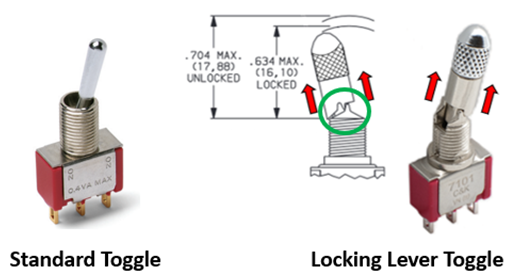June 12, 2025, 12:55:00 GMT
permalink Post: 11899120
Subjects: None
The thread is closed so there are no user likes are available and no reply is possible.
June 13, 2025, 10:08:00 GMT
permalink Post: 11900219
The country’s Ministry of Civil Aviation is mulling grounding all Boeing 787-8 Dreamliners as a precautionary measure while a safety review takes place, sources told Indian broadcaster NDTV.
Subjects: None
The thread is closed so there are no user likes are available and no reply is possible.
June 13, 2025, 11:42:00 GMT
permalink Post: 11900329
https://www.pprune.org/archive/index.php/t-433616.html
A faulty generator caused all sorts of problems with control of the aircraft. It is a reminder that complete electrical failure is not the only failure mode. Shutting down the faulty generator on that aircraft recovered the situation, but they had time and altitude on their side.
Subjects
Electrical Failure
Generators/Alternators
Links are to this post in the relevant subject page so that this post can be seen in context.
The thread is closed so there are no user likes are available and no reply is possible.
June 13, 2025, 11:56:00 GMT
permalink Post: 11900345
Subjects: None
The thread is closed so there are no user likes are available and no reply is possible.
June 14, 2025, 18:15:00 GMT
permalink Post: 11901671
The UK AAIB has \x91Expert\x92 status in the Indian safety investigation. In accordance with international protocols, release of information on the investigation rests solely with the Indian authorities.
Subjects
AAIB (All)
AAIB (UK)
AI171
Links are to this post in the relevant subject page so that this post can be seen in context.
The thread is closed so there are no user likes are available and no reply is possible.
June 16, 2025, 06:52:00 GMT
permalink Post: 11903115
The reason we used both Radio Alt and WoW is that both can give erroneous indications on certain conditions - RA can be 'fooled' by dense rain or even really dense fog (the signals bounce off the water and falsely indicate on-ground), the prox sensor system can subject to HIRF/Lightning interference.
TCMA acts quickly, but it does require some persistence, so an input glitch won't activate it (mainly N1, which is measured every 15 milliseconds).
What sort of 'confirmation' do you have in mind - the regulator mandate that resulted in TCMA basically says we can't take credit for the flight crew.
Subjects
Weight on Wheels
Links are to this post in the relevant subject page so that this post can be seen in context.
The thread is closed so there are no user likes are available and no reply is possible.
June 19, 2025, 11:13:00 GMT
permalink Post: 11905888
Subjects: None
The thread is closed so there are no user likes are available and no reply is possible.
June 19, 2025, 12:01:00 GMT
permalink Post: 11905926

Subjects
Condolences
Honeywell
Special Airworthiness Information Bulletin
Links are to this post in the relevant subject page so that this post can be seen in context.
The thread is closed so there are no user likes are available and no reply is possible.
June 19, 2025, 12:47:00 GMT
permalink Post: 11905963
Subjects: None
The thread is closed so there are no user likes are available and no reply is possible.
June 19, 2025, 14:08:00 GMT
permalink Post: 11906013
It seems the design, function and placement of these switches might have been \x93grandfathered\x94 over several generations of cockpit design.
Subjects: None
The thread is closed so there are no user likes are available and no reply is possible.
June 19, 2025, 15:36:00 GMT
permalink Post: 11906073
Many of the considerations I\x92ve read fail because the simultaneous failure of both engines is extremely unlikely, leading to a constant search for higher-order causes. It was suggested that an incorrect altitude setting led to an early thrust reduction. However, this would not explain the deployment of the RAT (Ram Air Turbine), especially since the thrust could have been readjusted. FADEC and TCAM are highly redundant systems, and TCAM failure is unlikely due to WOW (Weight on Wheels) logic, making a simultaneous engine failure after VR equally improbable.
With that said, and with regard to my question concerning the AD that relates to the fuel control switches (FCS), my thought\x97and it was nothing more than that\x97was that their activation becomes more probable if it can occur accidentally. That\x92s how I came across SAIB: NM-18-33.
Another user then brought up an iPhone. That notion would, of course, be dramatic\x97but how unlikely is it really that after approximately 10,000 actuations between December 2013 and June 2025, the two FCS no longer lock perfectly? Considering all of this, I find it quite conceivable that the A/T slightly reduced thrust in the first seconds after VR (e.g., if an incorrect target altitude had been entered) and that an object lying between the thrust levers and the FCS could have pushed the FCS into the \x93Off\x94 position. Due to the buttons on top of the switches, which provide some resistance, it\x92s even possible that the object both pulled and pushed them.
But all of this is speculation. The investigation report will bring clarity.
Even if my theory is not confirmed, I still believe that the positioning and mechanism of the FCS are suboptimal. Switches of such critical importance should be better protected, and movements in the area in front of the switches (like reducing thrust) should not follow the same direction as shutting off the fuel supply. A different switching direction alone would provide more safety\x97especially considering that the FCS are protected laterally by metal plates.
Subjects
Air Worthiness Directives
Engine Failure (All)
FADEC
Fuel (All)
Fuel Cutoff Switches
RAT (All)
RAT (Deployment)
SAIB NM-18-33
Special Airworthiness Information Bulletin
Weight on Wheels
Links are to this post in the relevant subject page so that this post can be seen in context.
The thread is closed so there are no user likes are available and no reply is possible.
July 09, 2025, 16:04:00 GMT
permalink Post: 11918446
Subjects: None
The thread is closed so there are no user likes are available and no reply is possible.
July 09, 2025, 20:05:00 GMT
permalink Post: 11918581
Edit: And here it is:
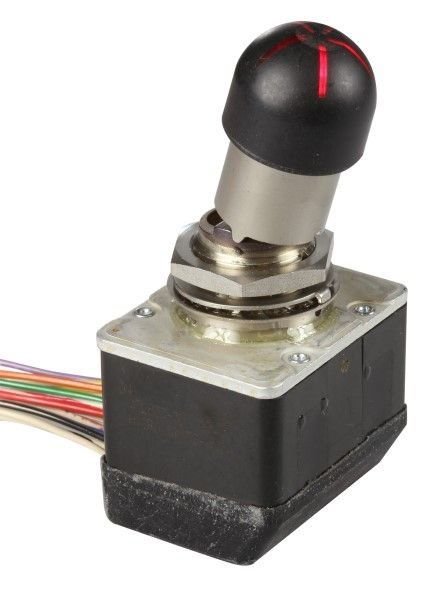
Subjects
Fuel (All)
Fuel Cutoff
Fuel Cutoff Switches
Honeywell
Links are to this post in the relevant subject page so that this post can be seen in context.
The thread is closed so there are no user likes are available and no reply is possible.
July 11, 2025, 21:56:00 GMT
permalink Post: 11919785
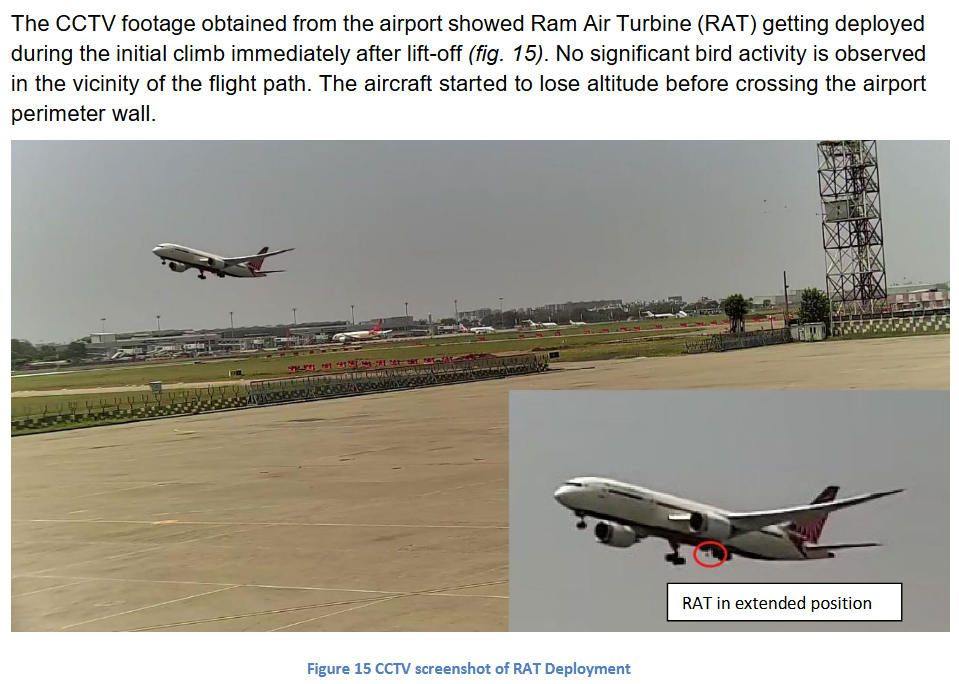
Subjects
RAT (All)
Links are to this post in the relevant subject page so that this post can be seen in context.
Reply to this quoting this original post. You need to be logged in. Not available on closed threads.
July 11, 2025, 22:03:00 GMT
permalink Post: 11919796
Subjects
CVR
Switch Guards
Links are to this post in the relevant subject page so that this post can be seen in context.
Reply to this quoting this original post. You need to be logged in. Not available on closed threads.
July 12, 2025, 11:26:00 GMT
permalink Post: 11920464
I could hardly figure what the "disengaged" word meant in this context, so I did a Google search for the switch part numbers (especially "766AT614-3D") to figure the difference between them, and a page from this chinese web site was part of the results.
And while I was painfully crawling the thread, I noticed the following picture about an "undesirable condition":
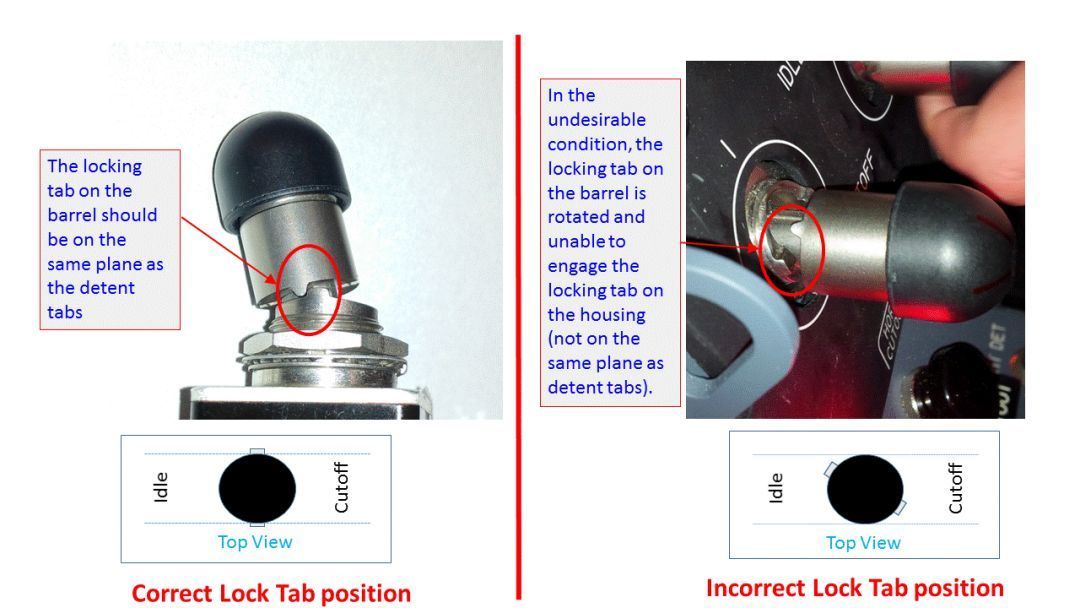
Incorrect lock tab position on fuel cut-off switch
If this incorrect mounting is actually possible, it would possibly remain unnoticed from the pilots (normal "pull-up then move" action is unaffected), but it would cancel the protective function of the so-called "locking tab", and even limit the travel of the switch handle in both directions, making it more vulnerable to an undesired change of state.
The photos above seem convincing enough, but I'd be very grateful for an informed opinion on this assembly mistake. Even if this is possible, the probability of both switches being unexpectedly snapped seems very remote to say the least, but not as remote as previously estimated.
One other useful thing from that web site is a partial schematic which shows the connection of the 4 poles in the switch. I believe this is from a 737NG but it should be the same idea.
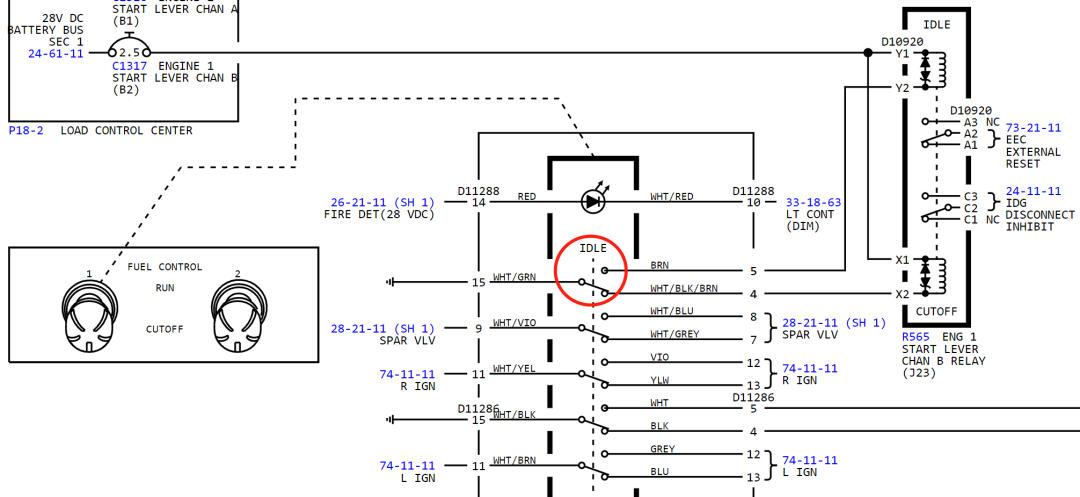
Subjects
Fuel (All)
Fuel Cutoff
Fuel Cutoff Switches
Honeywell
SAIB NM-18-33
Special Airworthiness Information Bulletin
Links are to this post in the relevant subject page so that this post can be seen in context.
Reply to this quoting this original post. You need to be logged in. Not available on closed threads.
July 12, 2025, 22:20:00 GMT
permalink Post: 11920839
Subjects
FDR
Fuel (All)
Fuel Cutoff
Fuel Cutoff Switches
Links are to this post in the relevant subject page so that this post can be seen in context.
Reply to this quoting this original post. You need to be logged in. Not available on closed threads.
July 13, 2025, 08:13:00 GMT
permalink Post: 11921074
The 747 has 3 poles per switch. To send signals to all the systems it needs to, splices and multi-output relays are involved. On some aircraft there are even separate power sources going to some of these poles.
Subjects
FDR
Spar Valves
Links are to this post in the relevant subject page so that this post can be seen in context.
Reply to this quoting this original post. You need to be logged in. Not available on closed threads.
July 13, 2025, 08:37:00 GMT
permalink Post: 11921088
Some Boeing SB's describe circuit board failures triggering all sorts of unexpected / unpredictable failures
Subjects
EAFR
RUN/CUTOFF
Links are to this post in the relevant subject page so that this post can be seen in context.
Reply to this quoting this original post. You need to be logged in. Not available on closed threads.
July 15, 2025, 13:44:00 GMT
permalink Post: 11922897
Subjects: None
4 recorded likes for this post.Reply to this quoting this original post. You need to be logged in. Not available on closed threads.
